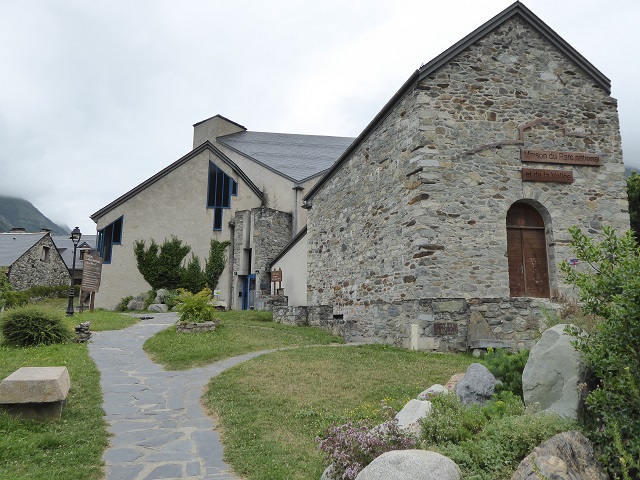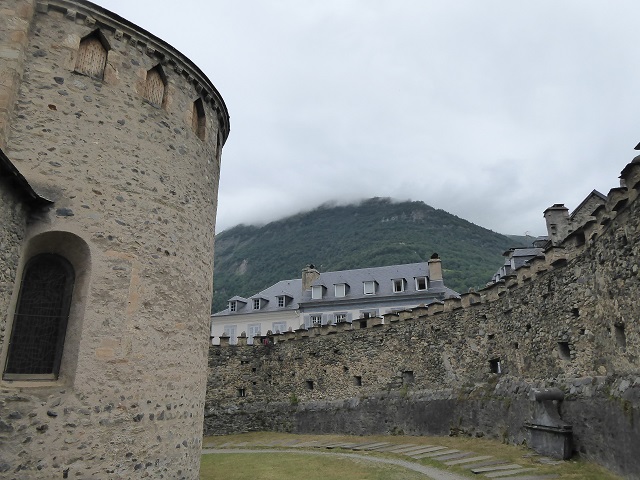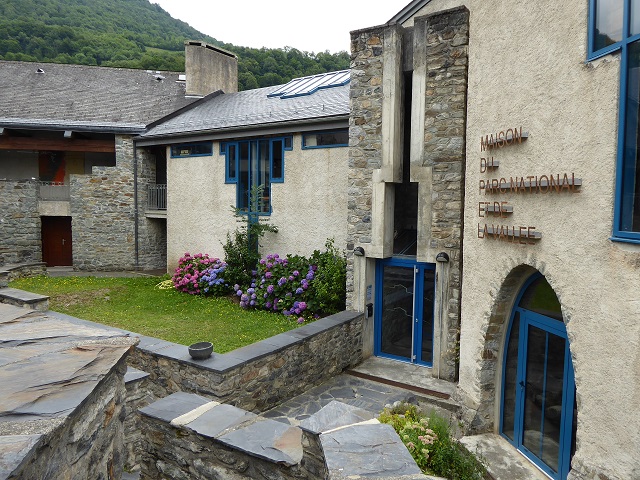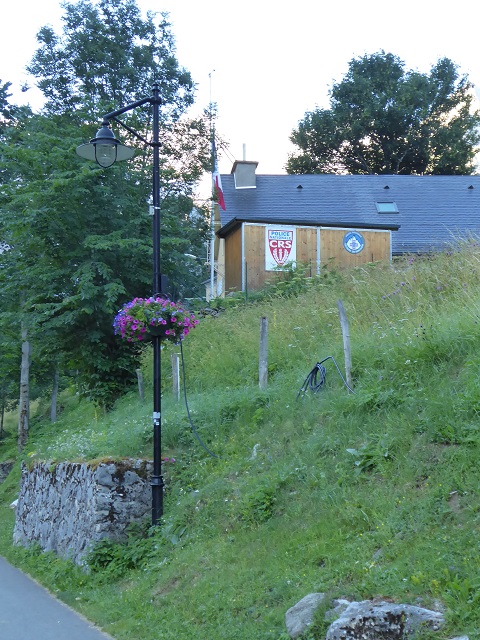
I have recently returned from my second walking trip to the Pyrenees (see here for links to posts last year). On the French side Public transport up into the Pyrenean valleys from the rail network are poor and we had to wait a couple of hours in Gedre for a connection to Gavarnie with its famous cirque. The bus stop was by a large tourist office which was thronged with people. Evidence, if any of the senior managers in our tourist industry are interested, of the stupidity of closing local tourist offices and proof that tourists want human contact as well as online information provided on the internet.

Wandering around the unspoilt part of the village, I unexpectedly came across this Maison du Parc National – the National Park’s own office and visitor centre – closed for lunch!

The centre was a surprise because I knew from my visit to Gavarnie last year that there was another National Park Office, together with large display area, in that village which was just 5 miles further up the valley. The sign at the Gedre Centre implied it served the Vallee of Luz St Serveur, which is just ONE of several large valleys which head into the National Park. An internet check confirmed that in the high Pyrenees there are further National Park offices located in Arrens-Marsous, Cauterets, Luz-Saint-Sauveur itself and Saint-Lary-Soulan. All these centres are outwith the National Park boundary, as is usual in French National Parks which don’t include settlements.
The contrast between our two National Parks, where everything is centralised is striking. There never were many local offices in our National Parks but with the closure of local offices, such as in Arrochar and Ballater, and other facilities such as the boat launching area at Milarrochy Bay, almost all the staff in both our National Parks are now based in a single main office. That has been done in the name of efficiency but has had important consequences. Staff are no longer in any sense embedded in the local communities or areas they are supposed to serve. They are also placed firmly under the control of a centralised bureacracy.
The National Park buildings at Gedre and Gavarnie illustrate a different story, one where staff appear to be based in local communities (it seems unlikely they would disappear for lunch if their homes were miles away). It would have been good to have talked to the people concerned to see how they operate and what differences this makes – apart from having proper lunch breaks!

I got a hint though of what difference locally embedded public authorities might make as we approached Gavarnie. Visitor cars and coaches are banned from the village and there were a couple of police officers at its entrance to the village directing people where to park. Later on I spotted a police office just above the village – so the police are locally based too!
Again the contrast with Scotland is striking. Here the police force is increasingly centralised and the officers who used to be based in villages such as Luss have been removed. It seems to me this helps to explain why now there is traffic chaos in Luss – which has caused so much trouble to local people – and the anti-social campers who started drinking around the village and which led local people to support the camping byelaws. A remote police force just cannot respond to these issues in the same way – there are always other priorities decided not by local people but by a centralised bureaucracy. The difference between how cars are managed in the tourist honeypots of Gavarnie and Balmaha, where the Loch Lomond and Trossachs National Park, Stirling Council and Police Scotland all appear to pass the buck for the regular traffic chaos, does not appear to me to be accidental. Rather, ineffective visitor management is a direct consequence of centralisation and the removal of resources from local communities.
That process has been made even worse in the Loch Lomond and Trossachs National Park through the centralisation of Ranger Services to try and enforce the camping byelaws.
The difference in attitudes towards delivery of services is not just about National Parks of course. Each local commune in France, some with less than 20 people, has its own Mairie responsible for local administration. Public authorities are still embedded in the areas they serve. This is despite the efforts of President Macron who wants to implement a more centralised system on the Anglo-Scottish model. We should learn from how people in France fight to defend local powers and resources.
In Scotland we have seen the closure of dozens of locally based offices/services by public authorities, from health and social work to the police, forestry and environmental protection. While local communities have lost the infrastructure and resources which might enable them to take control over what happens in their area, the rhetoric from the Scottish Government and Public Authorities about community empowerment and control has increased:
“New opportunities that provide community groups with more rights over decision making, service delivery and the management of local assets are being implemented by the Scottish Government through the Community Empowerment Act”.
(Extract from LLTNPA community empowerment page (see here))
We should not mistake this as anything other than rhetoric designed to mislead people as to what is really going. The Scottish establishment is stripping the heart out of local communities and our National Parks are playing their part in that process. At the same time, the establishment is devaluing and de-motivating the workforce by removing from them any control over what they do.
How they do things in other countries should remind us that there are alternatives.
